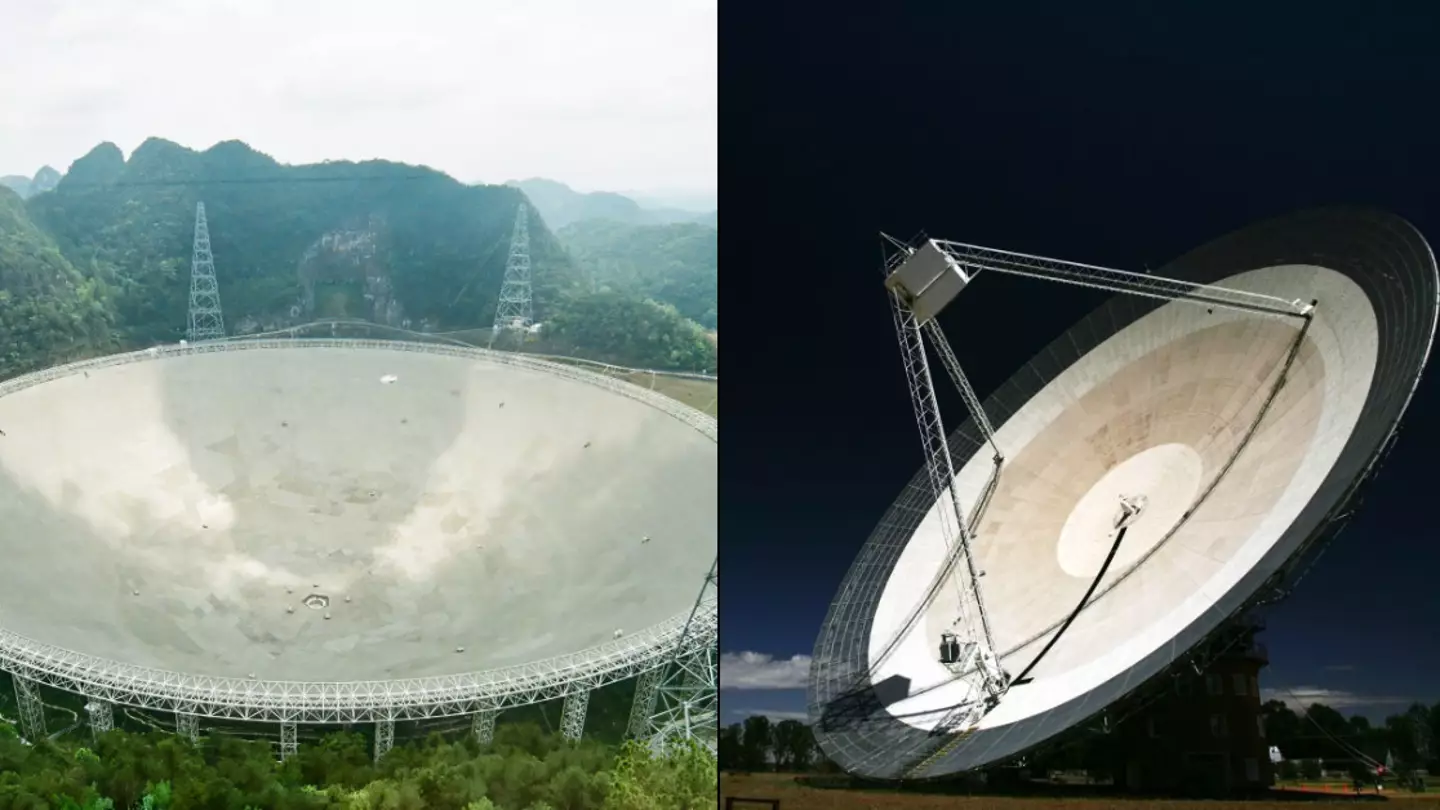
Search deep enough on the internet and you’ll find dozens of accounts from people claiming to have evidence of UFOs (more recently rebranded as UAPs) or even close encounters with aliens themselves.
However, nothing has been verified as of yet.
But the long, chaotic wait to find evidence of an extraterrestrial civilisation may finally be over, with one academic claiming that evidence could be published as soon as next month.

Unlike claims of alien sightings from pseudoscientists and UFO hunters, the latest claims come from someone Professor Simon Holland, an academic and popular scientist who has worked directly alongside the likes of NASA and the BBC.
Revealing the news during an interview with The Mirror, Holland explained that there are two groups of astronomers currently racing to publish their alien findings.
“We have found a non-human extraterrestrial intelligence in our galaxy, and people don’t know about it,” he said.
Holland didn’t give too many details about the discovery away, however, he claimed the information was passed along to him via a contact at Breakthrough Listen, a private scientific research institute founded by Yuri Milner.
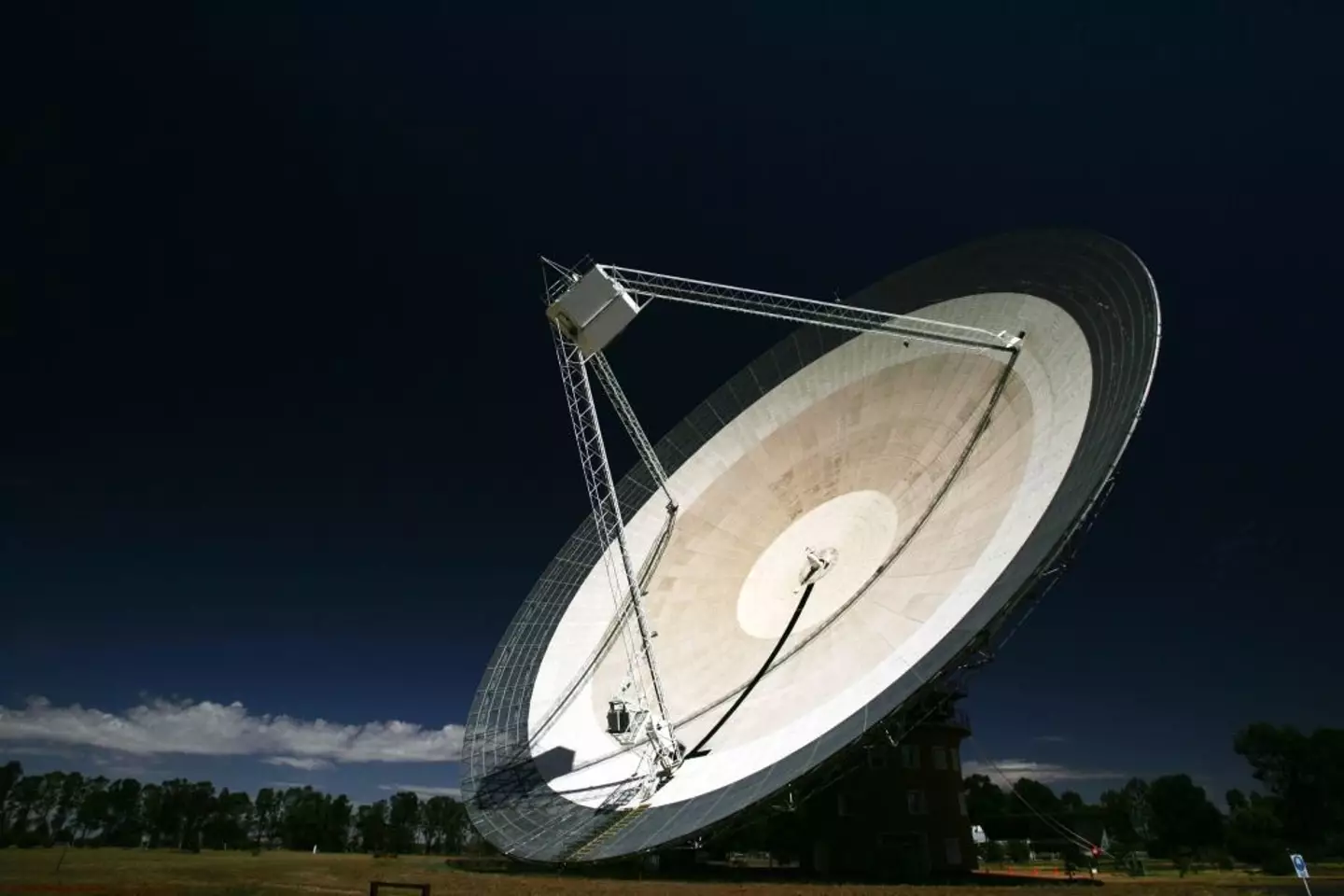
The update has been shared by popular science educator Professor Simon Holland (Ian Waldie/Getty Images)
However, don’t unfurl your ‘Welcome Aliens’ banner and scrunch the tin foil on your hat just yet, as there’s still much research which needs to be gathered before anyone can 100 percent confirm the existence of aliens.
Research currently stems back to a ‘non-human technological signature’ radiowave, known as BLC-1, picked up by Australia’s Parkes telescope back in 2019.
Initial research suggested the signal wasn’t extraterrestrial in nature, however, Holland has since added that Oxfordshire-based Breakthrough Listen is now looking to gather more evidence.
Regardless of further evidence uncovered, Holland was keen to stress that the signals weren’t a natural phenomenon.
“It’s a single point source,” he added. “The signal, instead of being the giant buzz of everything in the universe that we hear through all radio telescopes, was a narrow electromagnetic spectrum.”

However the team could be beaten to publishing by a Chinese agency (Qu Honglun/China News Service/VCG)
However, the team is supposedly not alone in their research, with Holland adding that Breakthrough Listen are currently in a race with the Chinese space agency who are researching the same radio signals.
“This is breaking news, as of yesterday, but the Chinese might be pipping them to the post, with their, FAST [Five-hundred-meter Aperture Spherical Telescope] program. It’s the largest telescope in the world since Arecibo,” he said.
So how long can we expect to wait before hearing the information from this report?
Holland went on to add that he believes the findings will be published – either by Breakthrough Listen or the Chinese team – within the next month of so.
LADbible has contacted Breakthrough Listen for comment.
And it could provide an answer to the age old question as to whether aliens exist.
The same unfortunately cannot be said for neighbouring Mars. With an atmosphere only one percent as dense as Earth’s and no magnetic field, life on the Red Planet wouldn’t exactly be a walk in the park.
But, there are some areas that might be a little bit friendlier than others and a hole on the slope of Arsia Mons could be one of them.
The crater-like opening, about 150 feet across, sits on the edge of the ancient volcano.
Scientists are currently unsure exactly what the hole could be or how deep it goes, but they have a pretty solid hunch that they are connected to the nearby volcano.
Speaking to Business Insider, Brandon Johnson, a geophysicist at Indiana’s Purdue University, said they are likely ‘skylights’ to an underground labyrinth of lava tubes that formed when the lave tubes caved in.
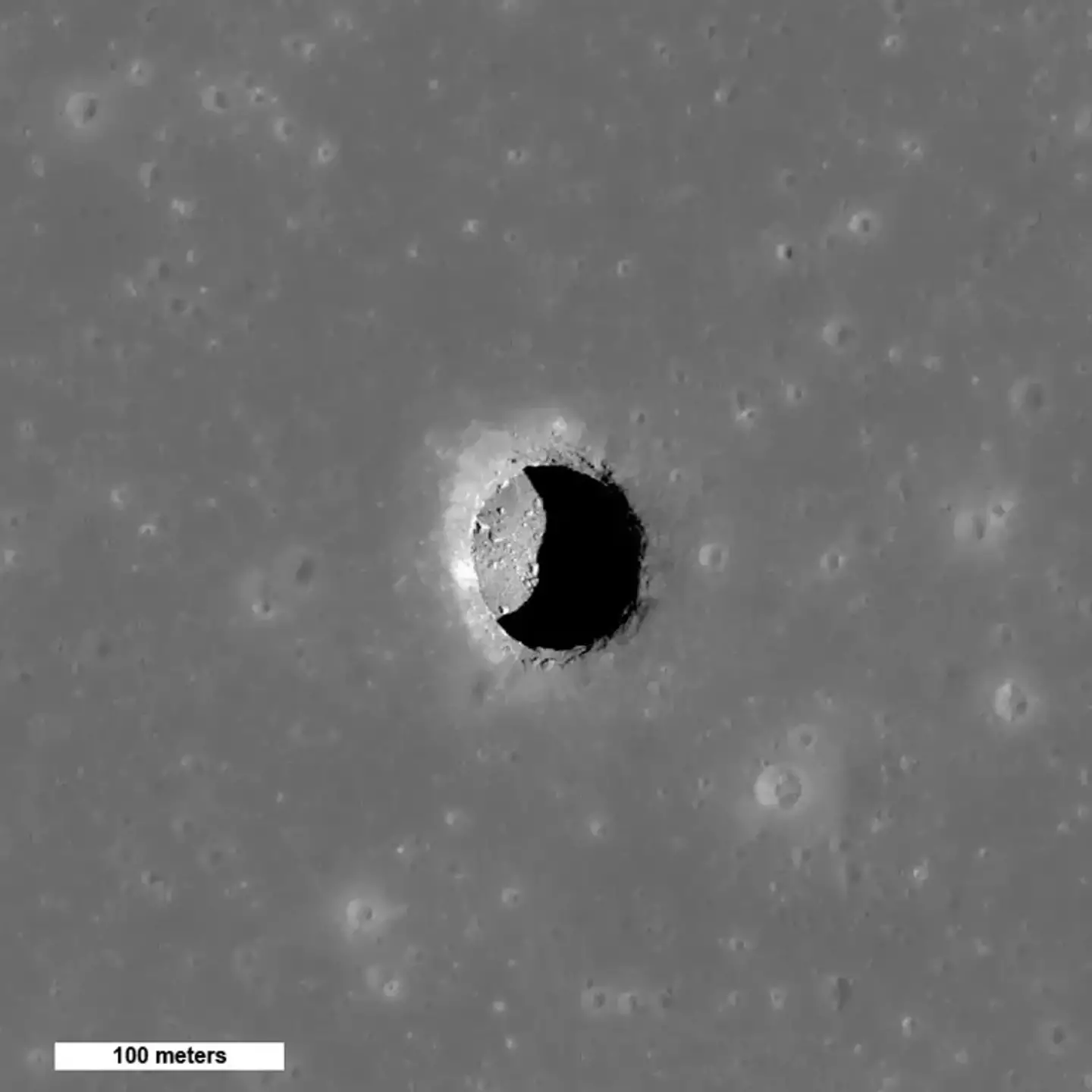
In 2022, scientists at NASA discovered a 150 foot wide hole on the surface of Mars (NASA)
Rather excitingly, the hole – which is one of a number of craters found on the planet’s surface – could play a big part in helping future manned missions to Mars by providing astronauts with shelter from intense radiation and solar storms.
Johnson said: “There’s more than one of these pits on Mars that we’ve seen.
“But they’re really interesting because they’re places where astronauts might be able to go and be safe from radiation.”
And theoretically, they could have provided such shelter to an ancient alien species.
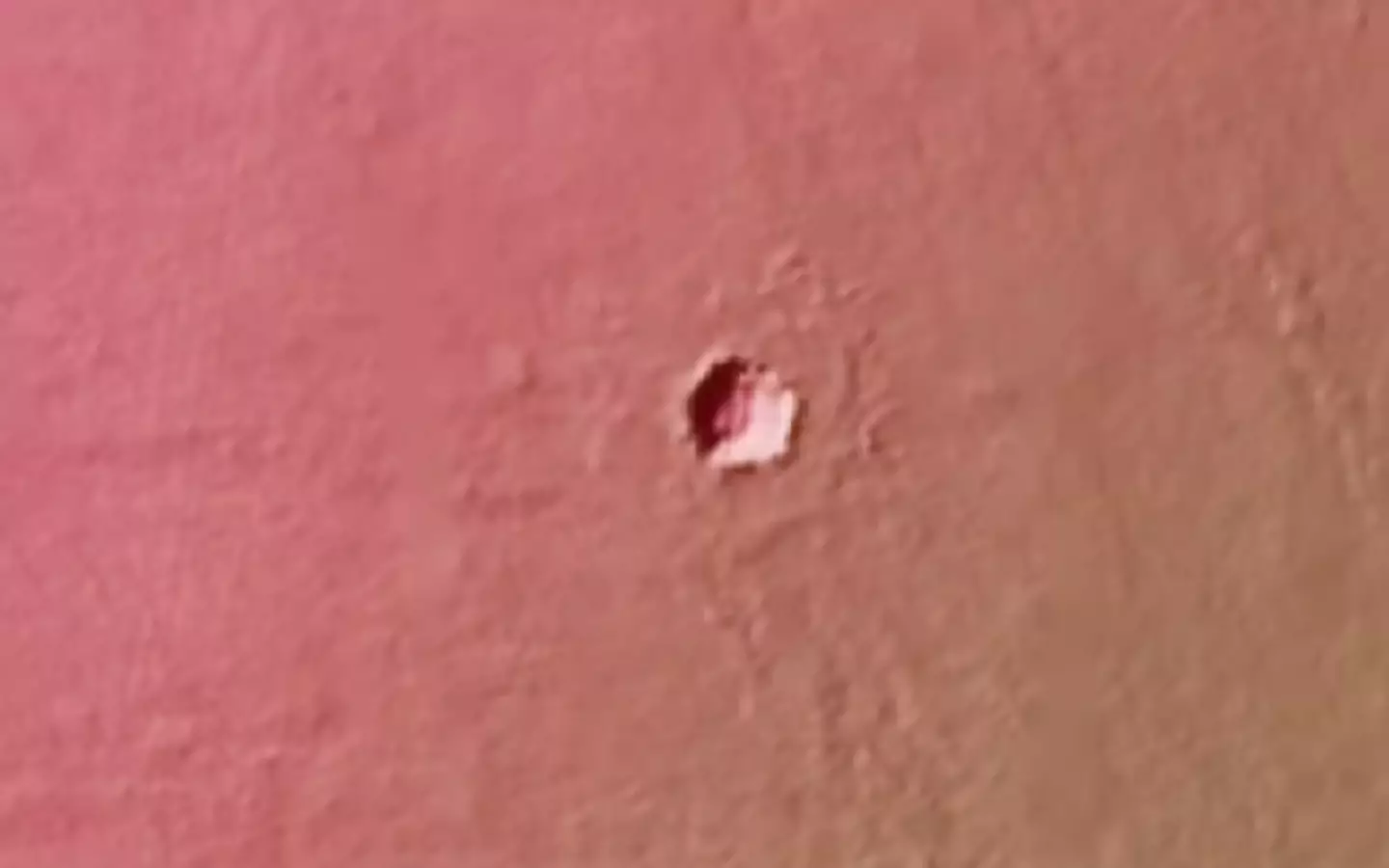
It has been suggested the hole could be sheltering an alien species from the harsh conditions on the planet (NASA)
Of course, the holes’ mere existence isn’t enough to answer David Bowie’s questions about life on Mars, but Johnson says: “This is a good place to look.”
And, what these holes do is give us access to Mars beneath its surface.
There, it could be like a whole other world when it comes to accessing potential ancient organic matter.
While there is nothing in the works just yet, Johnson confirmed: “There are missions proposed to essentially have a robot go on a line and drop down into one of these skylights and be able to explore what’s inside of them.”
Who knows what they might find when that happens?
It’s been a long-standing phenomena in the scientific world for more than 50 years, with astronomers pondering as to whether super structures in space do in fact exist.
Dubbed Dyson Spheres, the theory says that these are giant creations that surround a star to capture its solar power output for infinite energy supply.
And now, two new studies have showcased that these Dyson Spheres could in fact be a real thing with no answers available as to why there are anomalies in readings from deep space.
Named after physicist Freeman Dyson, who first proposed the idea of the gigantic spheres, the idea has evolved since then while remaining focused on the concept of harnessing the energy of a star to fuel alien civilisations’ needs.
Now, one study from Uppsala University in Sweden has been published that provides fresh clues as to their real life existence.

CGI of what a Dyson Sphere could look like (Getty Stock Images)
Forming part of Project Hephaistos, it is part of wider efforts within the scientific community in its ‘search for extraterrestrial intelligence’.
The new study, led by Ph.D. student Matías Suazo, says that Dyson Spheres ‘may be hiding in public data already collected as part of large astronomical surveys’.
And using data from the Gaia satellite, launched by the European Space Agency back in 2013 to map stars across the universe, Suazo and the team put together a new method for examining the existence of these space structures.
Published in the Monthly Notices of the Royal Astronomical Society, the researchers write: “This structure would emit waste heat in the form of mid-infrared radiation that, in addition to the level of completion of the structure, would depend on its effective temperature.
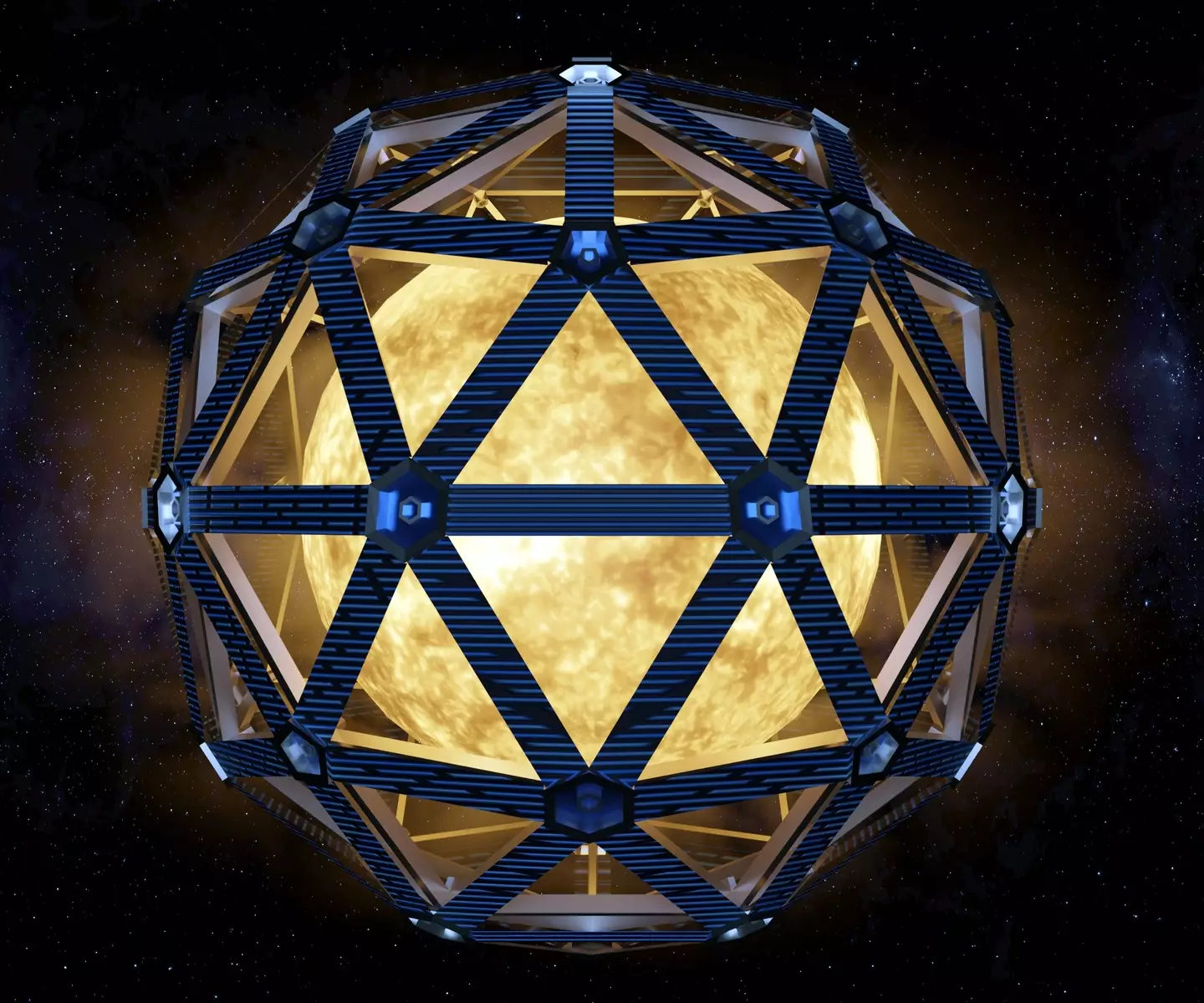
Dyson Spheres are theorised to surround stars to harvest energy for civilisations (Getty Stock Images)
“A specialised pipeline has been developed to identify potential Dyson Sphere candidates focusing on detecting sources that display anomalous infrared excesses that cannot be attributed to any known natural source of such radiation.”
Despite having five million potential stars to analyse, Suazo manages to bring this down to just seven possibilities.
Another study, led by Gaby Contardo at the International School for Advanced Studies in Italy, also looked at the five million objects captured by Gaia.
Their findings were eyebrow raising, with both producing results of infrared heart that couldn’t naturally be explained by known science.
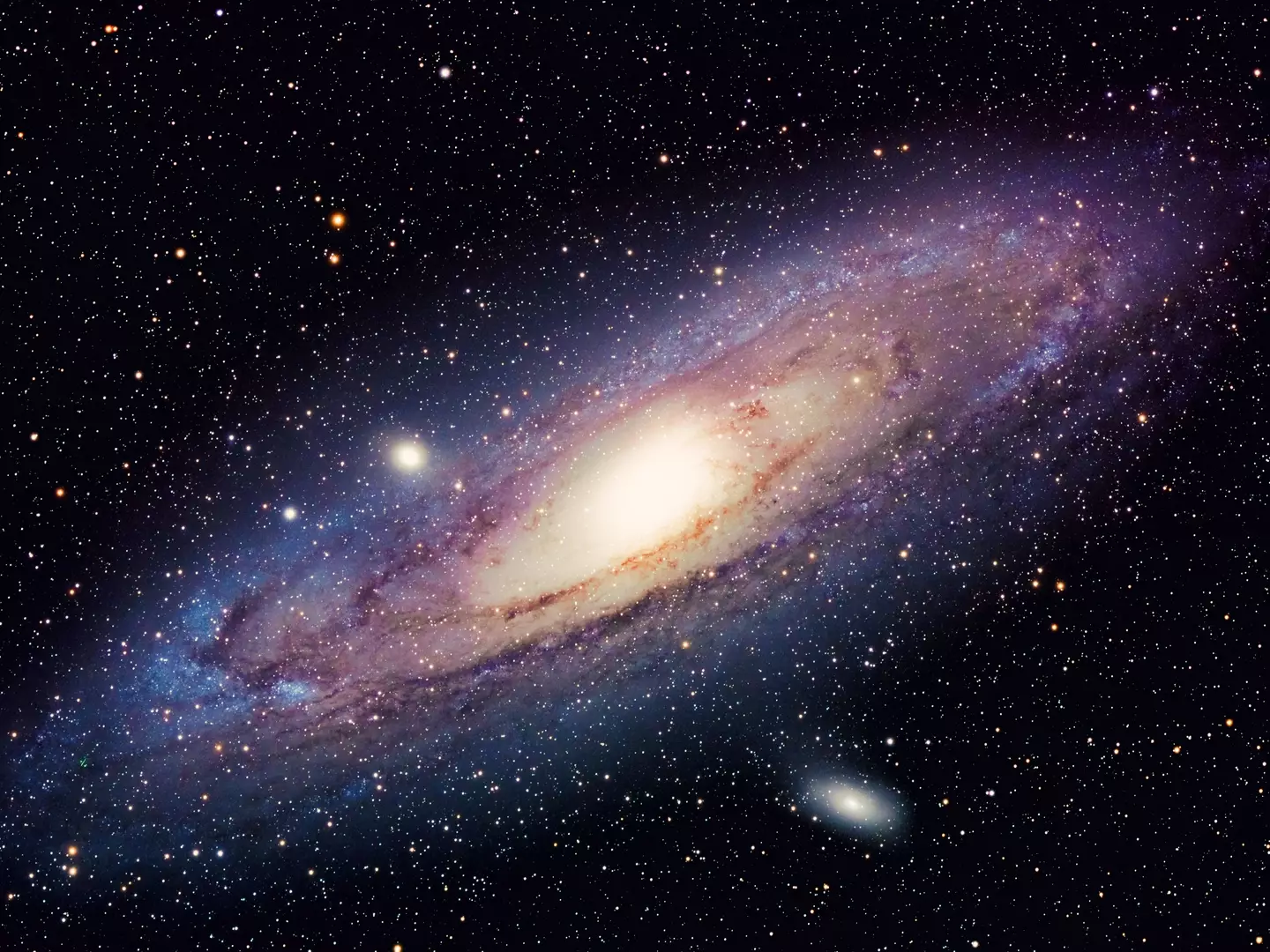
Could alien life exist out there? (Getty Stock Photo)
“The most fascinating explanation could be actual Dyson Spheres,” says Suazo.
The seven objects found by Suazo’s team were red dwarf stars within 900 light-years of Earth.
Research suggests that due to the images of the stars not being completely covered, a hybrid theory of the Dyson Sphere has mooted.
Called a Dyson Swarm, this is the idea of a collection of large satellites orbiting a star to collect energy.
NASA completed the feat in July this year, after sending the Psyche spacecraft out into space on 13 October 2023, so it could explore a 140-mile-wide metallic asteroid named 16 Psyche.
Its aim was to prove that lasers could be used to send messages deep into space, and the attempt was made earlier this year to find out if this was possible.

It’s been a year since the spacecraft was launched (PATRICK T. FALLON/AFP via Getty Images)
A laser signal was successfully sent from Earth to the space tech about 290 million miles away, a massive game changer in the science world.
It was done with the help of NASA’s Deep Space Optical Communications technology demonstration, which has responsible for this mission and developing the use of lasers to send messages.
Apparently, the achievements did stop there, as the 290 million miles that it travelled is about the distance between Earth and Mars at their furtherest points apart.
NASA hopes that this can aid future planned missions to Mars, which they have been talking about for decades.
Meera Srinivasan, the project’s operations lead, stated: “The milestone is significant. Laser communication requires a very high level of precision, and before we launched with Psyche, we didn’t know how much performance degradation we would see at our farthest distances.
“Now the techniques we use to track and point have been verified, confirming that optical communications can be a robust and transformative way to explore the solar system.”
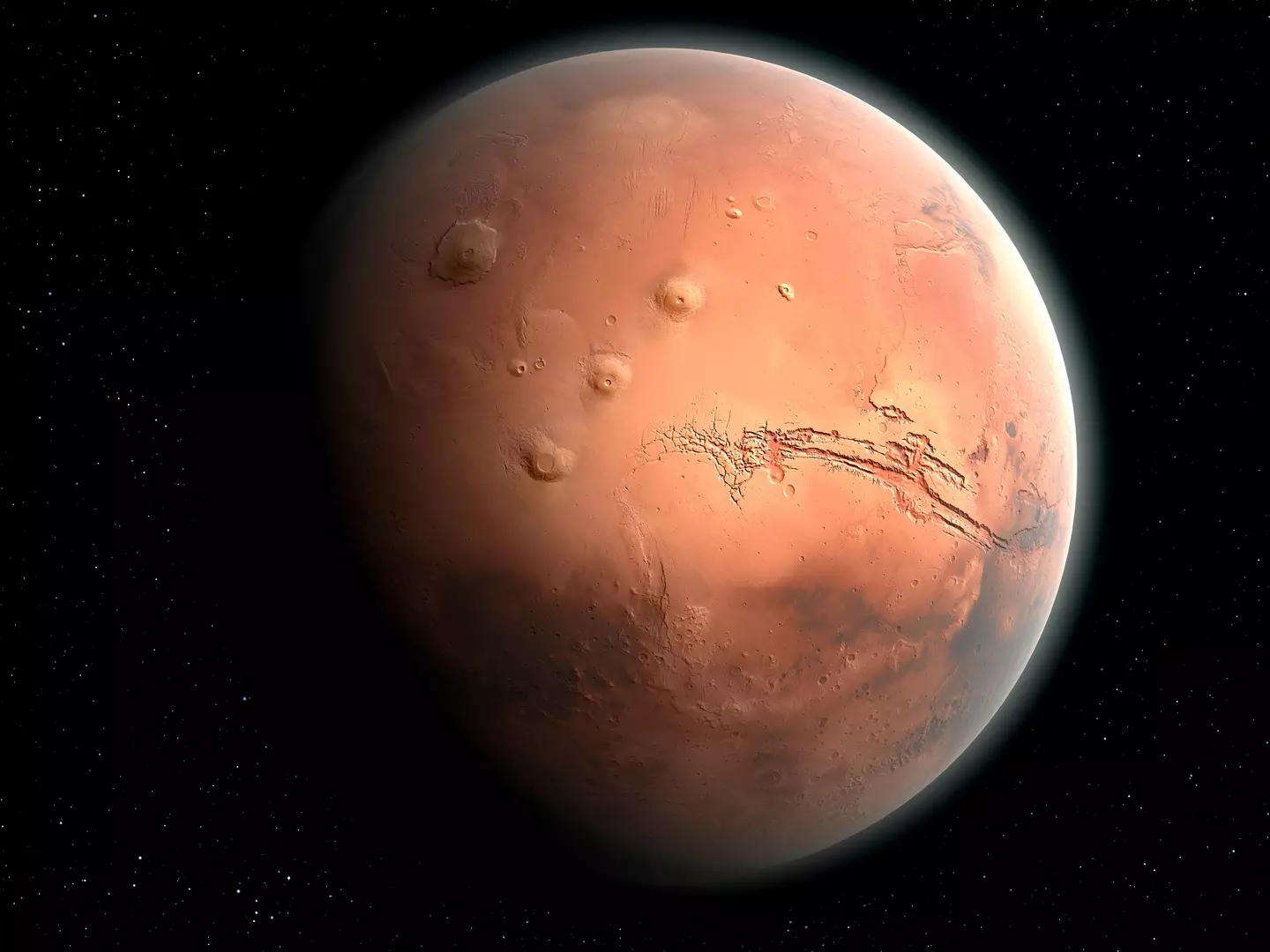
NASA are hopeful that this advancement could help in future manned missions to Mars (Getty Stock Photo)
Bill Nelson, an administrator at NASA also weighed in, revealing that this test broke the record for the ‘farthest laser communication ever sent’, taking to X to congratulate the successful team and hailing the revolutionary achievement.
He wrote: “NASA has broken the record for the farthest laser communication ever sent! We sent a laser signal to our Psyche spacecraft about 290 million miles away.
“Congrats, team. This extraordinary achievement will transform the way we explore the solar system.”
For all you boffins out there, NASA detailed that the system managed to achieve ‘a sustained downlink data rate of 6.25 megabits per second, with a maximum rate of 8.3 megabits per second’.
Basically, it signalled that the laser could prove to be more effective than traditional radio-based frequencies for space communications, though it has been over 50 years since our last manned mission to the Moon, let alone one to Mars.
It could be ‘we come in peace’, ‘we’re here to destroy you all’ or something else, as it’s unlikely that they’d actually be able to speak our languages.
While governments will have people on translation duty at the first sign of alien arrival there’s also a good chance that everyone else will have a crack at it too.
If you reckon you’re up to it then you should give an ‘alien message’ we received a try, although of course it’s not actually a transmission from aliens as this has come from the Search for Extraterrestrial Intelligence (SETI) Institute.
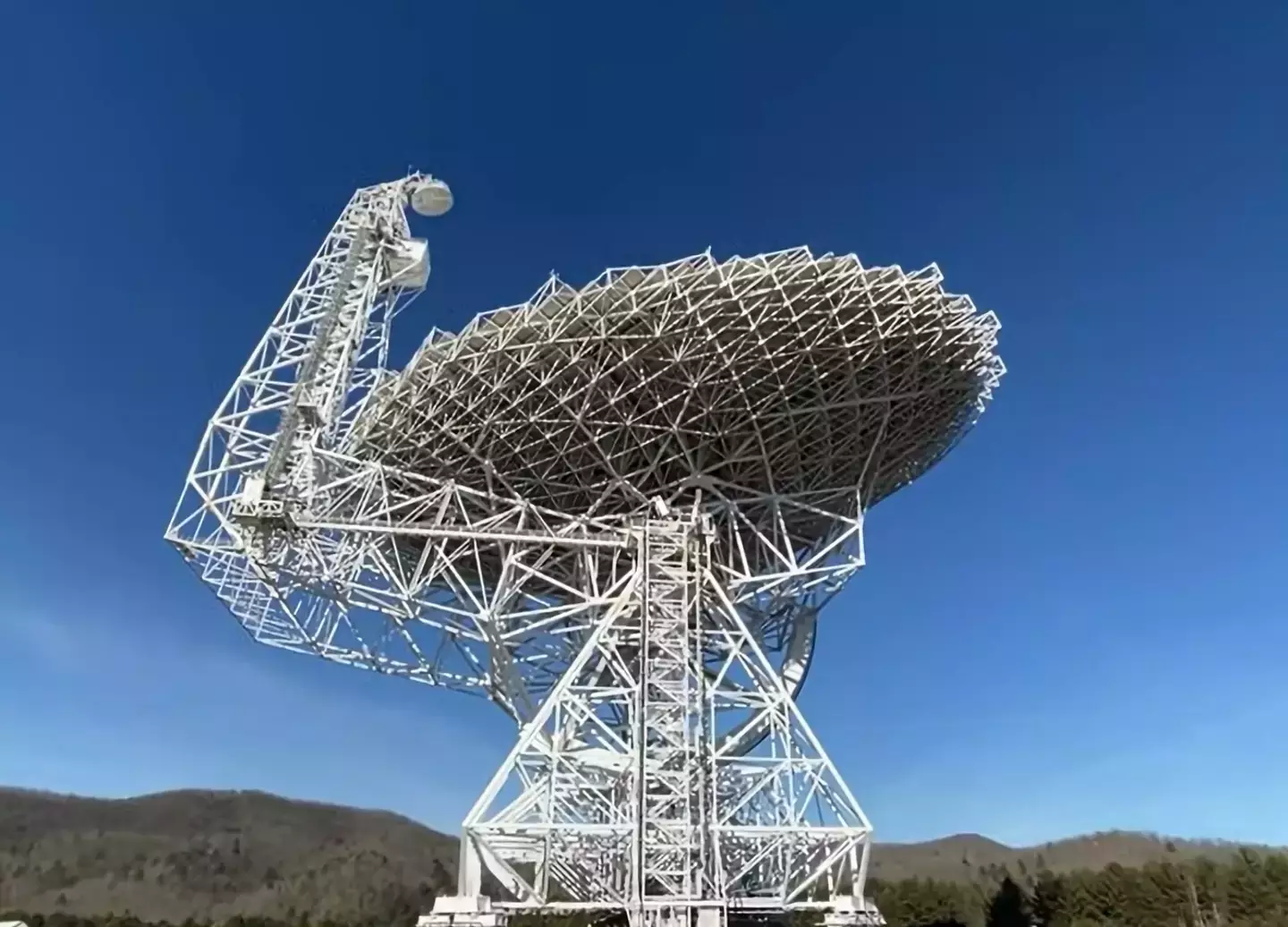
YouTube/A Sign In Space
It’s their project, ‘A Sign In Space’, a sort of intergalactic piece of ‘global theatre’ which has sent an encoded message from space to our planet.
Daniela de Paulis, the artist behind the project, explained why it would be so important to try something like this.
She said: “Throughout history, humanity has searched for meaning in powerful and transformative phenomena.
“Receiving a message from an extraterrestrial civilisation would be a profoundly transformational experience for all humankind.
“A Sign in Space offers the unprecedented opportunity to tangibly rehearse and prepare for this scenario through global collaboration, fostering an open-ended search for meaning across all cultures and disciplines.”
.jpg)
Getty Stock Photo
The transmission is available for anyone to download and attempt to decode, and that’s the name of the game.
The message was first sent out from European Space Agency’s ExoMars Trace Gas Orbiter, which is currently hanging around the red planet.
It was then picked up by three radio astronomy observatories, the SETI Institute’s Allen Telescope Array, California, the Robert C. Byrd Green Bank Telescope, West Virginia, and the Medicina Radio Astronomical Station Observatory, Italy.
Exactly what the message says is not clear and that’s because ‘A Sign In Space’ wants everyone to have a go at deciphering the out-of-this-world transmission.
ATA Project Scientist Dr. Wael Farah said: “This experiment is an opportunity for the world to learn how the SETI community, in all its diversity, will work together to receive, process, analyse, and understand the meaning of a potential extraterrestrial signal.”


